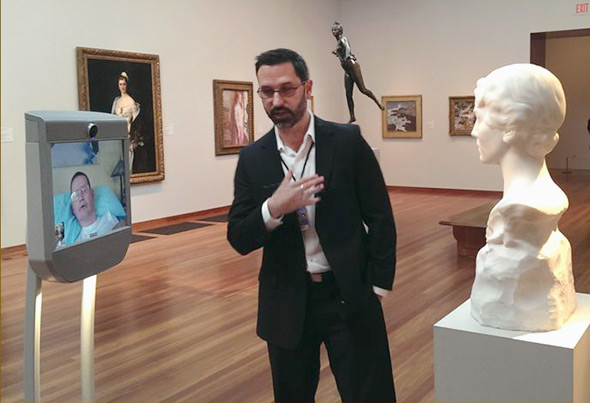
At Open Space, the blog of San Francisco MoMA, Monica Westin reflects on the design history and philosophy of the Beam, a “telepresence robot” that allows disabled patrons with limited mobility to visit museum exhibitions remotely. As Westin writes, the intersections between design and disability raise profound questions about the very meaning of “disability.” Here’s an excerpt:
Many “universal” technologies were originally created for specific people with disabilities by those who loved them. Alexander Graham Bell, who was married to a woman who was deaf and taught at schools for the deaf, designed the telephone as a kind of hearing aid. The modern typewriter was created by Pellegrino Turri in the early nineteenth century for his friend (or lover, depending on whose account you read), a countess who was blind and unable to write.
These stories, especially numerous in the history of communication technologies, run counter to the narratives of singular “geniuses” like Steve Jobs, who invent devices for a homogenous swath of consumers. Innovations like the typewriter are, rather than what we now call universal design, examples of inclusive design; when we encounter objects through the lens of inclusive design, we see a very different history of technology.
August de los Reyes, a pioneer in formalizing inclusive design as a process, has described the creation of solutions for singular people as “love stories.” Inclusive design as a practice involves first examining overlooked individuals or communities and creating for them: solving for specific people rather than abstract problems. This results in better products for everyone, and a more streamlined process that often obviates the need to add accessibility layers later.
Image: The Beam in action at the de Young Museum in San Francisco. Via Slate.